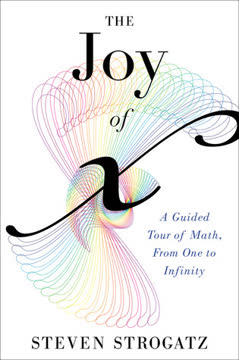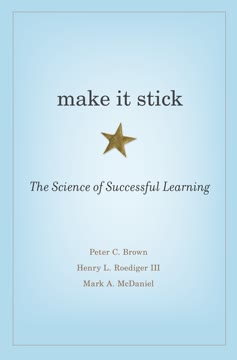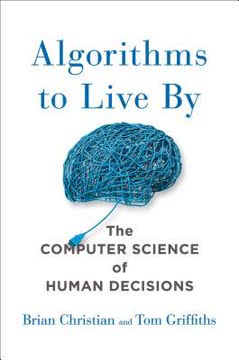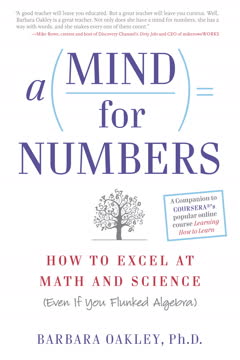つの重要なポイント
1. 集中モードと拡散モード:二つの基本的な思考パターン
「学習は、脳の異なる領域間での神経処理の複雑な点滅、および半球間の往復を伴う。」
二重モード思考。 脳は集中モードと拡散モードの二つの異なるモードで動作します。集中モードは集中した分析的な思考を含み、拡散モードはよりリラックスして広範な創造的なつながりを可能にします。
補完的な役割。 これらのモードは問題を解決し、新しい概念を学ぶために協力して働きます。集中モードは特定の詳細に取り組み、ステップバイステップのプロセスを通じて作業するために不可欠です。一方、拡散モードは大局を理解し、予期しないつながりを作るのに役立ちます。
実践的な応用。 両方のモードを効果的に活用するために:
- 集中的な作業とリラックスの期間を交互に行う
- ポモドーロ・テクニック(25分の集中作業と短い休憩)を使用する
- 散歩や運動など、拡散思考を促進する活動に従事する
- 問題から離れて後で戻ることでアイデアの「孵化」時間を確保する
2. チャンク化:習熟のための神経パターンの構築
「チャンクは意味を通じて結びつけられた情報の断片です。」
神経効率。 チャンク化は、個々の情報の断片をより大きな意味のある単位にグループ化するプロセスです。これにより、脳内での情報の保存と検索がより効率的になります。
チャンクの構築。 効果的なチャンクを作成するために:
- チャンク化したい情報に注意を集中する
- 基本的なアイデアを理解する
- チャンクが大局にどのように適合するかを見て文脈を得る
- 記憶から情報を呼び出す練習をする
実践的な利点。 チャンク化は:
- 作業記憶のスペースを解放する
- 問題解決を迅速化する
- 新しい状況への知識の移転を促進する
- 特定の分野での専門知識を構築するのに役立つ
3. 先延ばし:習慣を理解し克服する
「先延ばしは中毒のようなものです。一時的な興奮と退屈な現実からの解放を提供します。」
根本的な原因。 先延ばしはしばしば以下の原因から生じます:
- タスクに関連する不快感や不安
- 時間管理スキルの不足
- 完璧主義
- 明確な目標や優先順位の欠如
サイクルを断ち切る。 先延ばしを克服するために:
- ポモドーロ・テクニックを使用して作業を管理可能なチャンクに分ける
- 毎日のTo-Doリストを作成し、タスクを優先順位付けする
- ルーチンを確立し、それを守る
- タスクを完了したら自分に報酬を与える
- 自己慈悲を実践し、否定的な自己対話を避ける
ゾンビ習慣。 先延ばしはしばしば習慣的な反応です。習慣のキュー-ルーチン-報酬サイクルを理解することで、先延ばしをより生産的な行動に置き換えるために脳を再配線することができます。
4. 練習と反復:神経接続の強化
「練習は強力な神経パターン、つまり理解の概念的なチャンクを構築するのに役立ちます。」
意図的な練習。 効果的な学習には、特定の弱点をターゲットにした目的のある集中した練習が必要です。このタイプの練習は:
- 現在の能力を少し超える挑戦を提供する
- 即時のフィードバックを提供する
- 完全な注意と努力を必要とする
間隔を空けた反復。 練習を一度に詰め込むのではなく、時間をかけて分散させる。このアプローチは:
- 神経接続をより効果的に強化する
- 長期的な保持を改善する
- 睡眠中に情報の統合を可能にする
能動的な想起。 材料を受動的にレビューするのではなく:
- 定期的に自分をテストする
- 概念を自分の言葉で説明しようとする
- 新しい状況や問題に知識を適用する
5. 記憶技術:保持と想起の強化
「記憶宮殿技法は、家のレイアウトのような馴染みのある場所を思い出し、それを覚えたい概念イメージを配置するための視覚的なメモ帳として使用することを含みます。」
視覚化の力。 脳は視覚的および空間的な記憶に対して驚異的な能力を持っています。この能力を活用することで、学習と想起が大幅に向上します。
効果的な技術:
- 記憶宮殿:情報を馴染みのある空間の特定の場所に関連付ける
- 記憶術:リストや概念を覚えるために頭字語、韻、フレーズを作成する
- 視覚的比喩:抽象的なアイデアを表す鮮明で記憶に残るイメージを作成する
- マインドマッピング:概念間の関係を示すために情報を視覚的に整理する
実践的な応用。 学習時に:
- 主要な概念の視覚的表現を作成する
- 色分けや図を使用する
- 記憶宮殿を「歩く」練習をする
- より強力な記憶形成のために複数の感覚(視覚、聴覚、運動感覚)を組み合わせる
6. インターリービング:学習を混ぜ合わせてより良い結果を得る
「インターリービングとは、異なる戦略を必要とするさまざまな種類の問題を混ぜて練習することを意味します。」
反復を超えて。 同じ種類の問題を繰り返すことは初期の理解を構築するのに役立ちますが、異なる種類の問題や概念を混ぜることで、より深く柔軟な学習が可能になります。
インターリービングの利点:
- 問題の種類を区別する能力を向上させる
- 新しい状況への知識の移転を強化する
- 一種類の問題での繰り返し成功による錯覚を防ぐ
- 知識の実世界での応用を模倣する
実施戦略:
- 学習セッション内で問題の種類を混ぜる
- 関連する科目(例:代数と幾何)を交互に学習する
- 新しい概念とともに以前に学んだ材料を再訪する
- 各問題に適した技術を特定する必要がある練習セットを作成する
7. テスト対策:プレッシャー下でのパフォーマンスを最大化する
「テストは、どれだけ知っているかを測る手段だけではありません。テスト自体が強力な学習体験です。」
テスト準備。 効果的な戦略には:
- 学習プロセス全体で定期的に自己テストを行う
- 練習中にテスト条件をシミュレートする
- 練習テストの間違いをレビューし理解する
- 弱点に焦点を当てる
テスト中:
- 「ハードスタート-イージージャンプ」技法を使用する:難しい問題から始め、行き詰まったらすぐに簡単な問題に移る
- 時間を効果的に管理し、高価値の質問により多くの時間を割り当てる
- 深呼吸とポジティブな自己対話を使用して不安を管理する
- 一般的な間違いを探して回答を二重チェックする
テスト後の学習。 テスト後に:
- 間違いをレビューし理解する
- エラーのパターンを特定し、将来の学習を導く
- 最終スコアに関係なく、成功と進歩を祝う
8. 苦闘の価値:学習における挑戦を受け入れる
「間違いは避けられません。それを乗り越えるためには、課題に早めに取り組み、特に楽しんでいない場合は作業セッションを短く保つことです。」
生産的な失敗。 難しい概念や問題に苦労することは、学習プロセスの自然で必要な部分です。それは:
- より強力な神経接続を構築する
- 問題解決スキルを向上させる
- 忍耐力と回復力を育む
成長マインドセット。 挑戦を能力への脅威ではなく成長の機会として受け入れる。このマインドセットは:
- 努力と持続力を奨励する
- 失敗の恐怖を軽減する
- 学習への愛を促進する
生産的な苦闘のための戦略:
- 課題に早めに取り組み、困難に対処する時間を確保する
- 本当に行き詰まったときに助けを求めるが、自分で問題に取り組む前に助けを求めない
- 結果だけでなく学習プロセスを振り返る
- 進歩と小さな勝利を祝う
9. 睡眠と運動:効果的な学習のための重要な要素
「睡眠は、人々が難しい問題を解決し、学んでいることに意味と理解を見出す能力に驚異的な違いをもたらすことが示されています。」
学習における睡眠の役割:
- 記憶を統合し、神経接続を強化する
- 覚醒中に蓄積する脳の毒素を除去する
- 拡散モード思考を通じて問題解決能力を向上させる
運動の利点:
- 脳への血流を増加させ、認知機能を改善する
- 新しいニューロンの成長(神経新生)を刺激する
- ストレスを軽減し、気分を改善し、学習能力を向上させる
実践的なヒント:
- 一貫した質の高い睡眠を優先する(ほとんどの成人にとって7〜9時間)
- 定期的に運動する、短い活動でも有益
- 問題解決を強化するために、睡眠前に難しい材料をレビューする
- 散歩のような軽い運動中に「能動的な想起」を考慮する
10. メタファーとアナロジー:理解のための強力なツール
「メタファーと物理的アナロジーは、非常に異なる領域からのアイデアが互いに影響を与えることを可能にするチャンクを形成します。」
認知の橋。 メタファーとアナロジーは、新しい抽象的な概念を馴染みのある具体的なアイデアに結びつけます。このプロセスは:
- 複雑なトピックの理解を促進する
- 記憶と想起を強化する
- 創造的な問題解決を促進する
効果的なメタファーの作成:
- 理解しようとしている概念の重要な側面を特定する
- 類似の特性を持つ馴染みのあるオブジェクトやプロセスを見つける
- 馴染みのあるものと新しいものの間に明確なつながりを描く
科学における例:
- パイプを流れる水としての電気
- タンパク質を構築するための設計図としてのDNA
- 原子構造のモデルとしての太陽系
実践的な応用。 新しい概念を学ぶとき:
- 積極的にメタファーやアナロジーを探すか作成する
- これらの比較を仲間と議論し洗練する
- 接続を強化するために視覚的表現を使用する
- どんなメタファーやアナロジーにも限界があることを認識する
最終更新日:
FAQ
What's A Mind for Numbers about?
- Focus on Learning Techniques: A Mind for Numbers by Barbara Oakley explores effective strategies for mastering math and science, emphasizing the importance of understanding how the brain learns.
- Cognitive Science Insights: The book delves into cognitive science, explaining how focused and diffuse modes of thinking affect problem-solving and creativity.
- Practical Applications: Oakley provides practical advice and techniques, such as chunking and retrieval practice, to help students overcome challenges in math and science.
Why should I read A Mind for Numbers?
- Overcome Math Anxiety: The book offers strategies to build confidence and improve skills in math and science, making it ideal for both enthusiasts and those who fear these subjects.
- Empowerment Through Knowledge: It empowers readers by teaching effective learning methods, making the process more enjoyable and less stressful.
- Research-Based Techniques: Oakley’s methods are grounded in cognitive science, providing evidence-based strategies for better academic performance.
What are the key takeaways of A Mind for Numbers?
- Two Modes of Thinking: Understanding focused and diffuse thinking is crucial for effective learning, with focused thinking being analytical and diffuse thinking allowing for creative insights.
- Chunking Information: The book emphasizes chunking, which involves grouping information into manageable units to enhance memory and understanding.
- Retrieval Practice: Engaging in self-testing and retrieval practice is more effective than passive studying methods, strengthening memory and understanding.
How does A Mind for Numbers define focused and diffuse thinking?
- Focused Thinking: This is the concentrated, analytical mode used for problem-solving and understanding specific concepts.
- Diffuse Thinking: A more relaxed, creative mode that allows for broader connections and insights, often activated when the mind is at rest.
- Balancing Both Modes: Oakley emphasizes the importance of alternating between these modes to enhance problem-solving abilities and foster creativity.
What are some effective study techniques from A Mind for Numbers?
- Pomodoro Technique: Involves working in focused bursts followed by short breaks, helping maintain concentration and reduce burnout.
- Memory Palace Technique: Uses visualization to associate information with specific locations, enhancing recall by tapping into spatial memory.
- Active Recall: Actively recalling information strengthens neural connections and improves retention, achievable through self-quizzing or teaching others.
How does A Mind for Numbers address procrastination?
- Understanding Procrastination: Oakley explains that procrastination often stems from discomfort with a task, and recognizing this can help develop strategies to overcome it.
- Habit Formation: Discusses how habits can be harnessed to create productive routines by identifying cues and rewards.
- Practical Strategies: Techniques like the Pomodoro method and setting specific goals encourage focused work sessions and manageable task lists.
What is the significance of chunking in A Mind for Numbers?
- Definition of Chunking: Chunking is the process of grouping information into larger, meaningful units, making it easier to remember and understand complex concepts.
- Building Expertise: Creating a library of chunks improves problem-solving skills and intuition in math and science, allowing for quicker recall during tests.
- Steps to Chunking: Oakley outlines steps for effective chunking, including working through problems, taking breaks, and revisiting material to reinforce understanding.
What are some effective memory techniques mentioned in A Mind for Numbers?
- Chunking Information: Breaking down complex information into smaller, manageable pieces allows the brain to process and remember information more efficiently.
- Spaced Repetition: Reviewing material at increasing intervals helps reinforce memory and prevents forgetting, making it a powerful tool for long-term retention.
- Visual Imagery: Using visual metaphors and stories enhances memory by creating vivid mental images, aiding in the recall of information.
What are some common misconceptions about learning math and science discussed in A Mind for Numbers?
- Illusions of Competence: Many students believe they understand material simply by rereading it, but true understanding requires active engagement and recall.
- Fixed Mindset: The book challenges the notion that some people are inherently "bad at math," arguing that skills can be improved with the right techniques and mindset.
- Overemphasis on Memorization: While memorization is important, understanding concepts is crucial for applying knowledge effectively, focusing on comprehension rather than rote memorization.
What are the best quotes from A Mind for Numbers and what do they mean?
- “Being good at science and mathematics isn’t just something you are; it’s something you become.”: Highlights that skills in math and science can be developed through practice and effective learning strategies.
- “The Law of Serendipity: Lady Luck favors the one who tries.”: Emphasizes the importance of effort and persistence in learning, increasing the likelihood of success and unexpected discoveries.
- “Procrastination is the death of success.”: Underscores the detrimental effects of procrastination on academic performance, serving as a reminder to take control of one’s habits to achieve goals.
How can I apply the concepts from A Mind for Numbers to my studies?
- Implement Study Techniques: Use techniques like the Pomodoro method and active recall in study sessions to stay focused and improve retention.
- Create a Chunked Library: Build a library of chunks as you learn new concepts, enhancing problem-solving abilities and making studying more efficient.
- Reflect on Your Learning: Regularly assess understanding and adjust study habits as needed, using insights from the book to create a personalized learning strategy.
What is the significance of Santiago Ramón y Cajal in A Mind for Numbers?
- Neuroscience Pioneer: Cajal is recognized as the father of modern neuroscience, illustrating the importance of persistence and adaptability in learning.
- Learning from Failure: His journey highlights that even those who struggle can achieve greatness through hard work and dedication, serving as inspiration for learners.
- Creativity in Science: Oakley emphasizes Cajal’s creative approach, showing that imagination and curiosity are vital components of learning, with his ability to visualize complex concepts being a key lesson.
レビュー
本書『A Mind for Numbers』は、数学や科学、その他の科目を効果的に学ぶための実践的なアドバイスで高く評価されている。読者は、学習技術、脳の機能、そして勉強習慣についての明確な説明を高く評価している。多くの人々は、この知識をもっと早く教育の過程で知っていれば良かったと感じている。この本は、学生、専門家、そして学習スキルを向上させたいと考えるすべての人々にとって価値があると見なされている。一部の人々は、この本が一般的すぎる、または繰り返しが多いと批判するが、大多数はそれを洞察に満ちたものであり、数学や科学以外のさまざまな分野にも適用できると感じている。
Similar Books

















